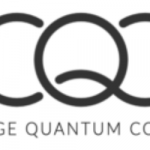Team of Physicists from Helmholtz-Zentrum Dresden-Rossendorf (HZDR) and TU Dresden Design Single Photons from Silicon Chip
(ScienceDaily) Quantum computers are expected to revolutionize database searches, AI systems, and computational simulations. The greatest possible compatibility with current silicon-based electronics will be a key advantage. And that is precisely where physicists have made progress: a team of physicists from the Helmholtz-Zentrum Dresden-Rossendorf (HZDR) and TU Dresden have designed a silicon-based light source to generate single photons that propagate well in glass fibers.
“We were able to show for the first time that a silicon-based single-photon source is possible,” Astakhov’s colleague Dr. Yonder Berencén is happy to report. “This basically makes it possible to integrate such sources with other optical components on a chip.” Among other things, it would be of interest to couple the new light source with a resonator to solve the problem that infrared photons largely emerge from the source randomly. For use in quantum communication, however, it would be necessary to generate photons on demand.
But before they can consider practical applications, the HZDR researchers still have to solve some problems — such as a more systematic production of the new telecom single-photon sources. “We will try to implant the carbon into silicon with greater precision,” explains Georgy Astakhov. “HZDR with its Ion Beam Center provides an ideal infrastructure for realizing ideas like this.”



















